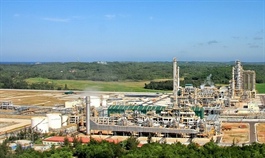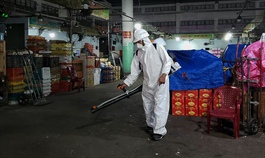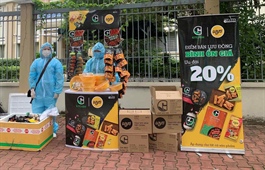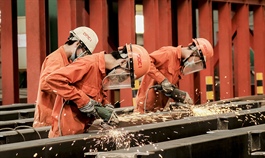Problems factories face when workers live on-site
Problems factories face when workers live on-site
The CEO of my company cried during a meeting with managers since our factory had just been forced to close after implementing the 'three on-site' rule for a while.
The British CEO sent this message to all employees a few days ago: "The board of directors sincerely apologizes for the stress and anxiety caused by the positive cases in the company. I know you have put your trust in the management to keep all of you safe, and I regret that we could not do it. I would like to send my deepest apologies to our F0 friends, who are under isolation. Our company must suspend operations until this incident is resolved."Our company had adopted the ‘three on-site’ scheme more than a month ago, and more than half of the over 2,000 employees had signed up to work and stay at the factory without going out or home.
We invested billions of dong in initial costs and daily expenses to arrange for over 1,000 people to eat, live and work on-site. The company did not expect to make any profit then, and even feared losses. The main purpose was to try and ensure employees would not become unemployed during the pandemic, and fulfill important orders.
Normally, employees have one meal at the workplace. But now the company had to provide three main meals and an evening snack every day.
We renovated, expanded the factory and built more toilets and bathrooms to ensure there were enough for the employees. Each person was provided with a mattress, mosquito net, blanket, pillow, toothpaste and toothbrush, coat hanger, and basin. Every week they were also given shampoo, shower gel and laundry detergent.
The company also quickly installed table tennis tables, roller skating areas, badminton courts, mini football fields, and areas for shuttlecock kicking and working out.
Each living area was fitted with a large screen for watching movies and listening to music, and each workshop was equipped with a loudspeaker for singing karaoke during break times.
On Saturdays employees were provided up to three cans of beer and snacks.
Besides, we had bought a number of oxygen tanks, supplements, fever medicines, N95 masks, and protective gear beforehand. The cost of weekly Covid-19 tests was also significant.
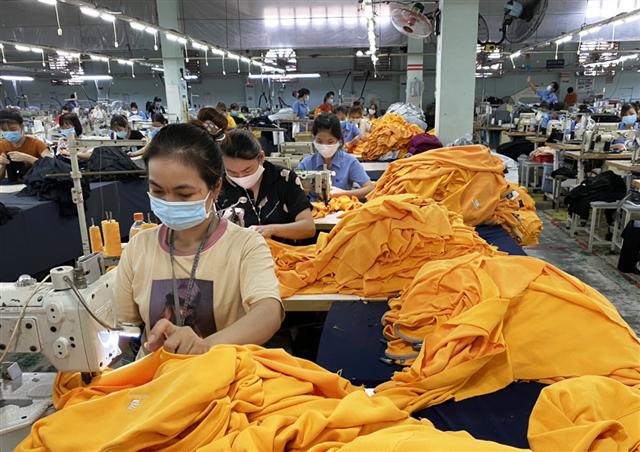
Workers in the stay-at-work team at Thanh Cong garment factory in Tan Phu District, HCMC. Photo by VnExpress/An Phuong
|
As a precaution against Covid, from the beginning, each worker had to test negative before entering the factory within the day.
They would then be quarantined in a separate area and get a PCR test after five days. Only if the test was negative would they be allowed to work.
If a worker needed more necessities, they could register with the office and the company would order them from supermarkets, and the goods were delivered once a week.
The supermarket staff would place the ordered goods at a specified location and withdraw, and company staff would disinfect and bring the goods in.
All transactions with non-essential contractors and suppliers were suspended. At units that needed to maintain operations such as delivering raw materials or buying food and drinks, staff must have tested negative for Covid-19 within three days and wear protective clothing.
They were not allowed to leave their vehicle, which was sealed between the time they entered the factory and left.
We even divided the factory into ‘bubbles,’ and each bubble was further divided into smaller areas with separate living quarters so that different groups would not interact with each other.
That way, if unfortunately one of the groups had someone with Covid, then the rest would remain safe.
Normally everyone in the company would eat in the cafeteria, but now the meals were delivered directly to workers' workstations.
Kitchen and housekeeping staff and security guards had their own bubbles and worked only there.
But despite such thorough precautions, to our great shock and sadness the factory discovered a case of Covid- earlier this week.
All operations had to be suspended immediately.
We do not have any way to determine how Covid came into the company. It could be that some newcomers carried the disease with them though their first two tests came out negative, and the virus only started spreading later.
It could also be that an employee secretly received some goods from outside through the fence at night.
I know that many other companies have encountered similar situations despite the ‘three on-site’ scheme. Some of them discovered the infections late and became sources of outbreaks. In the end their bosses had to watch tearfully as their companies got shut down.
As an insider, I truly feel the pain of having all the efforts and dedication of hundreds of people go to waste.
To successfully implement the ‘three on-site’ model, the most important thing is to have absolute screening and absolute control through the operation processes.
If there are still transactions with the outside, there is always a potential risk of the defenses being breached.
In areas where the disease is still spreading in the community or where there is poor compliance, the ‘on-site’ model could quickly become a nightmare.
A break in production means a break in the economy, a break in the jobs and livelihoods of workers.
But I cannot help but wonder if there is another method more effective than the ‘three on-site’ to keep production going.
If there is no alternative, for this model to be effective, businesses need the support of authorities to reduce the pressure. This could be in the form of tax breaks, a reduction in Covid-19 testing fees, electricity and water bills and interest rates on bank loans, or subsidization of workers’ salaries during the period they are quarantined before starting work.
Our company chose to quarantine them for five days. If we had quarantined them for the full 14 days, there would have been greater safety, but the labor costs would have put huge pressure on it.
Businesses are all struggling with how to maintain production and managing by themselves without knowing if they would be closed down the next day.
I hope the Ministry of Health would prioritize vaccination for workers in factories, industrial parks and delivery companies we deal with on a daily basis. This is vital to the production and logistics industry, and to keep supply chains intact.
Businesses are a big partner of the government, and so we are willing to help with the vaccination campaign to prevent production disruptions.
What we need is a mechanism to implement this cooperation.







